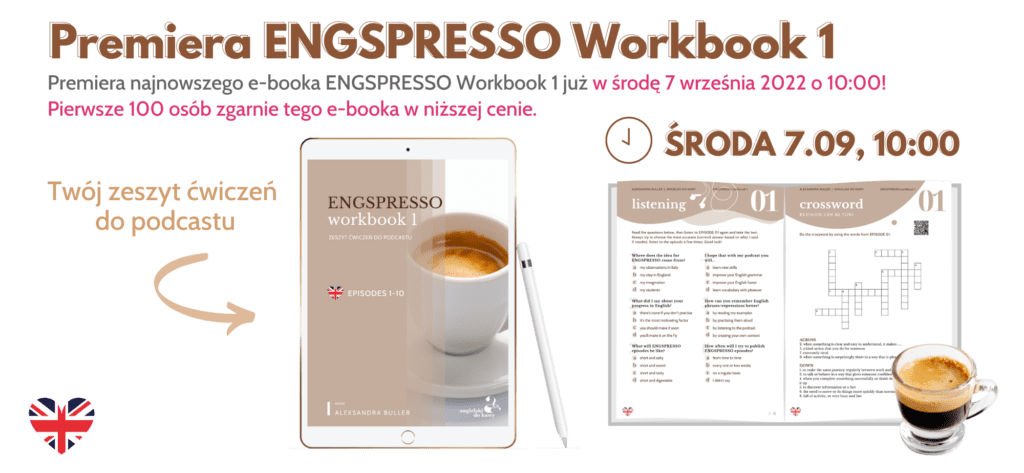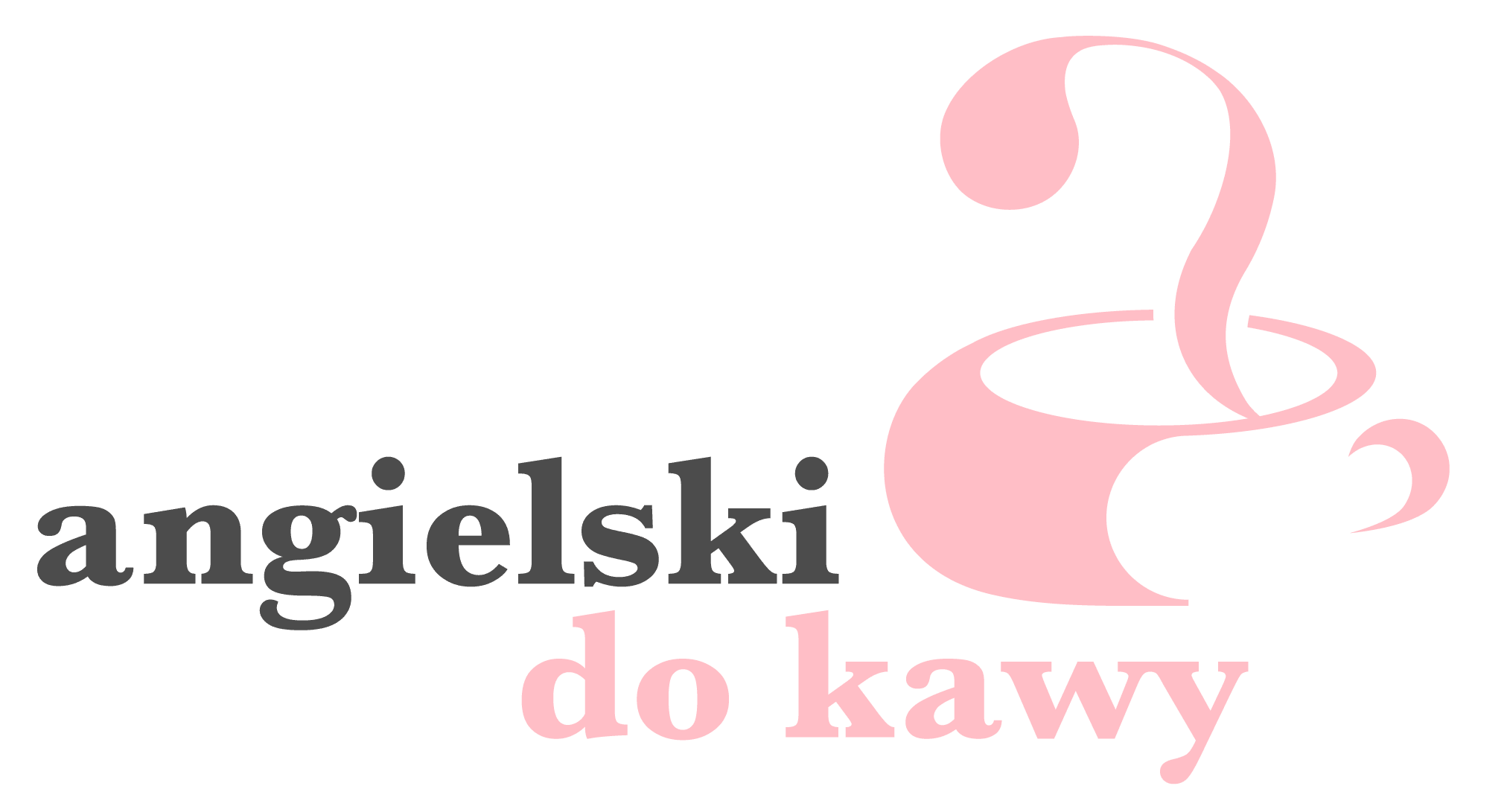Transcript of my podcast episode (16)
Hello there! We’ve had quite a break, haven’t we? But now I’m back, and I’m going to continue my ENGSPRESSO episodes as usual. Perhaps some of you already know why I haven’t shown up here lately. Well, it’s because I’ve been working on something that’s related to this podcast series. So this is the good news I want to share with you: my ENGSPRESSO Workbook 1 is finally ready! It’s based on the first ten ENGSPRESSO episodes, so if you haven’t listened to some of them yet, you can still catch up on that! The workbook contains ten chapters, and each chapter covers one ENGSPRESSO episode. There are three pages with vocabulary exercises, and then another three with writing and listening activities as well as a crossword for you to revise the vocabulary. This kind of revision is actually super fun! And to be frank with you, when I was doing my own exercises in the workbook the other day, I was really enjoying that. So I bet you’ll have fun with it, too! And I’m sure that you’ll take your English to the next level by doing all the activities I prepared for you in the ENGSPRESSO workbook.
Now, to wrap it up, I’m going to launch the workbook really soon, i.e. on 7th September, on Wednesday at 10 a.m. So there are just about two weeks left until I publish the e-book. Please make sure you remember the date and time because the first 100 of you have a chance to get the e-book at a lower price.
All right! Having said all that, I can now teach you another two expressions.
The first one is TO DRAW SB’S ATTENTION TO STH. When we draw somebody’s attention to something, we want that person to pay attention to something specific, we want them to focus on something particular. You might have heard a similar expression: TO GET/ATTRACT/CATCH SB’S ATTENTION. However, if you get/attract/catch somebody’s attention, you make someone notice you. So there’s a difference in meaning here. In the first case, you make somebody pay attention to something, you make somebody concentrate on something, and in the second case, you make them pay attention to you, you make them concentrate on you. You understand what I mean, don’t you? Anyway, today let’s just stick to the first expression and see how we could use it in some context.
For instance: He was trying to draw their attention to the lesson topic, but they were completely distracted. Now, repeat after me.
The translation is: Próbował (dosł.) przyciągnąć ich uwagę do tematu lekcji, ale byli kompletnie rozproszeni (po polsku lepiej brzmi: „Próbował zwrócić/skierować ich uwagę na temat lekcji, ale byli kompletnie rozproszeni.”)
Another example: I’d like to draw your attention to the more eco-friendly alternatives. Chciałabym, żebyście zwrócili uwagę na bardziej ekologiczne alternatywy.
The second expression is ALL IN ALL, and it means ‘considering everything, considering all the different parts of the situation together’.
For instance: All in all, our investment in the property was a brilliant idea.
Ogólnie rzecz biorąc, nasza inwestycja w tę nieruchomość była znakomitym pomysłem.
Another example: All in all, what matters most is your optimistic attitude to life.
W sumie to, co liczy się najbardziej, to twoje pozytywne nastawienie do życia.
And now it’s time for your ENGSPRESSO to go!
Our context for the phrases is:
All in all, tabloids make money by drawing our attention to the lives of celebrities.
Ogólnie rzecz biorąc, brukowce zarabiają (dosł.) poprzez przyciąganie naszej uwagi do życia celebrytów. (po polsku lepiej brzmi: „Ogólnie rzecz biorąc, brukowce zarabiają poprzez zwracanie/kierowanie naszej uwagi na życie celebrytów.”)
Excellent! It’s been a lovely episode, hasn’t it? Apart from our usual expressions, there are again so many words that boost your vocabulary. If you want to make sure that you understand them correctly, check out the transcript of this episode at the link in the description down below. Obviously, you can also easily find it on my website www.angielskidokawy.pl.
Thank you for your time and talk to you soon!





